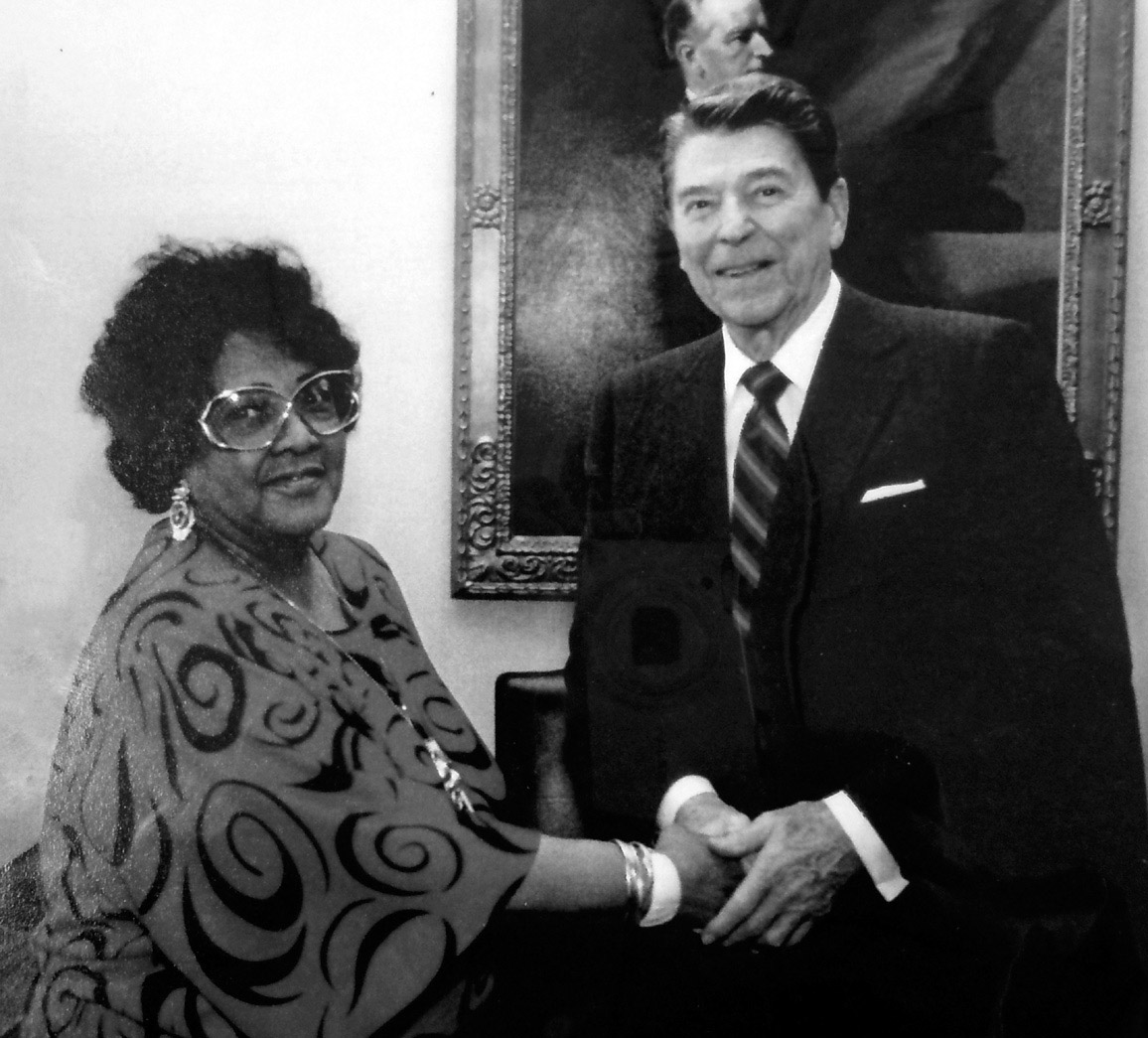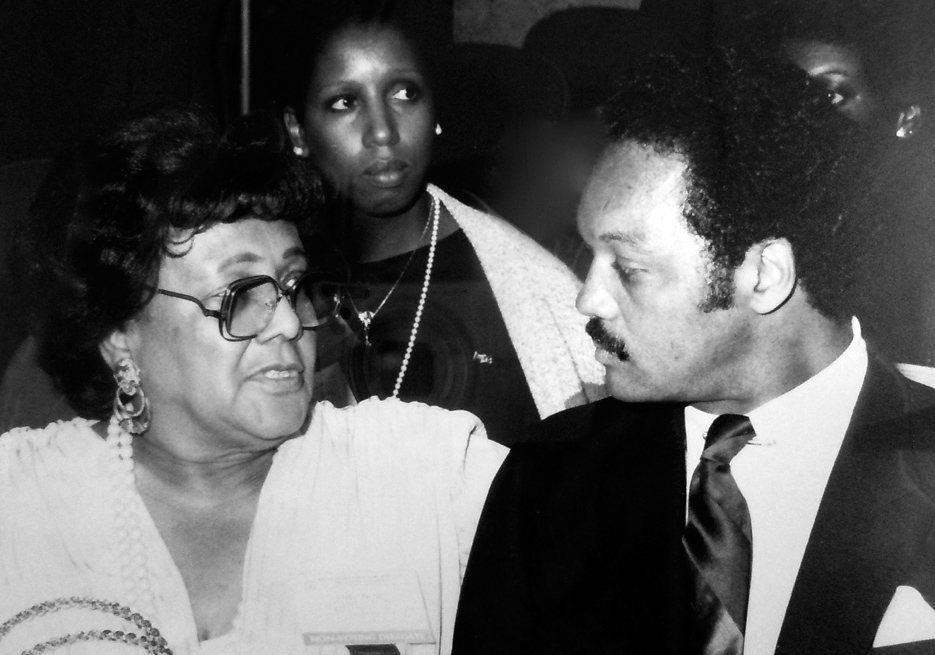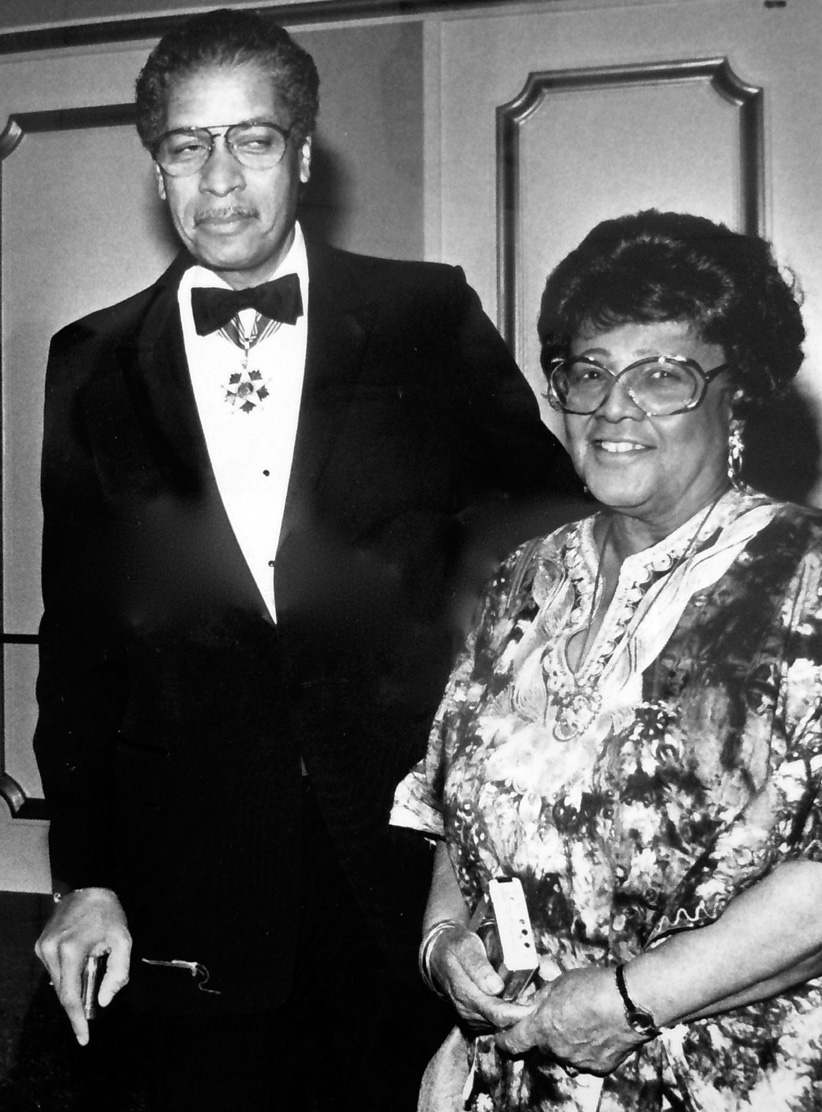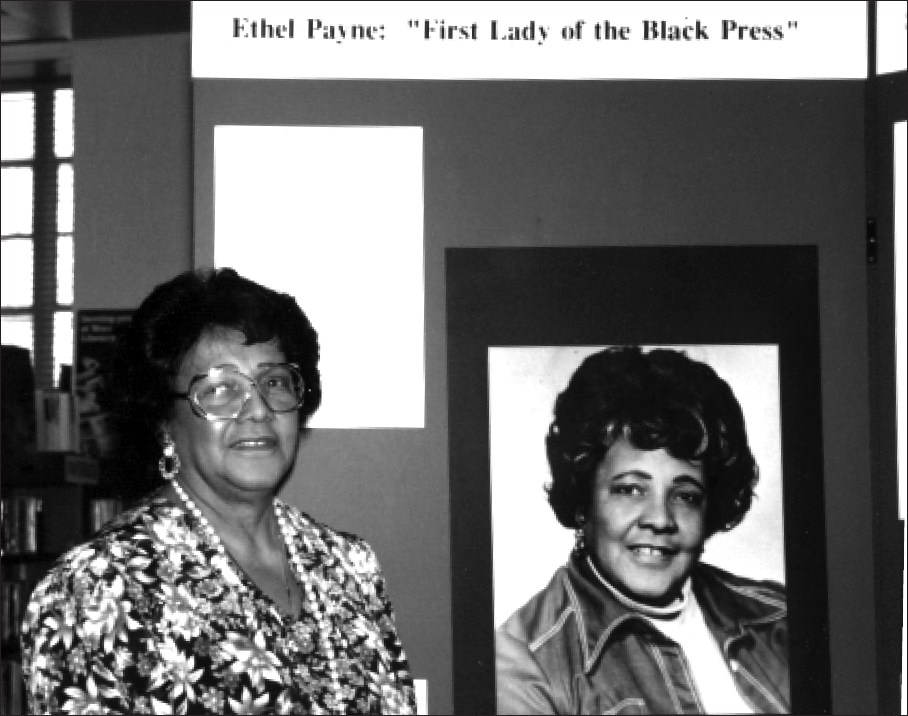PHOTOS SECTION

Ethel Payne sits for an early portrait in 1911 or 1912.

Ethel stands in the snow with her older brother, Lemuel, in front of the family’s South Side, Chicago, Throop Street home.
All photographs courtesy of the Library of Congress unless otherwise noted.

In the 1940s, Payne (on the right) became increasingly active in Chicago’s civil rights movement. She recruited members for the NAACP and in 1941 worked with A. Philip Randolph’s March on Washington Movement as a key organizer in Chicago.

Payne sails to Japan in 1948 to work as a hostess in an army service club. On the back of this snapshot, she wrote, “1st day at sea, notice my sea legs.”

On an army base in Japan between 1948 and 1951, Payne enthusiastically takes to her job of creating entertainment for the black servicemen, including arranging birthday parties. (Courtesy of the Moorland-Spingarn Research Center)

Payne leads a group of soldiers out for a night’s entertainment in Tokyo. “We hired 25 rickshaws and did the town up,” she wrote. (Courtesy of the Moorland-Spingarn Research Center)

Payne sits down to interview Illinois governor Adlai Stevenson shortly after becoming a reporter for the Chicago Defender in 1951.

Payne joins Illinois Democratic senator Paul Douglas at a Capital Press Club dinner in Washington in the 1950s.

With other reporters, Payne interviews Roy Wilkins, the executive secretary of the NAACP, in the mid-1950s. The journalist on the far right is Louis Lautier, the first black reporter accredited to the White House press corps.


As Payne’s reporting grew to be an important component of the Defender, the paper advertised its association with her. (Courtesy of the Chicago Defender)

Vice-President Richard Nixon gives thought to a question from Payne when he, along with his wife, Pat, came to Payne’s Washington apartment for a party in 1958 reuniting the reporters that covered the vice-president’s trip to Ghana the previous year. (Courtesy of James A. Johnson)

The Nixons gladly pose for photographs during the 1958 party. In this one, Payne and her nephew Joseph Sample stand by the vice-president and his wife.

As a reporter with an interest in world affairs, Payne frequented embassy functions in Washington like this one at the Embassy of Ghana, a country whose independence celebrations she had covered in 1957.

Payne’s nephew James A. Johnson was denied a post as a Capitol page in 1959 because of his race. He was able to attend and two years later graduated from the Capitol Page School when five members of the House each agreed to hire him as a part-time messenger. (Courtesy of the Moorland-Spingarn Research Center)

Payne and President John F. Kennedy enjoy a light moment in the Rose Garden in 1962.

Payne watches President Lyndon B. Johnson deliver a talk to a visiting group of civil rights leaders in 1965.

While Payne had severely criticized Lyndon Johnson when he was the senate majority leader, she became a strong supporter of his when he succeeded in obtaining passage of important civil rights legislation as president.

Payne interviews a soldier from Chesapeake, Virginia, during her three-month reporting tour in 1967. She was the first black journalist to report on the war from Vietnam. (Courtesy of the Moorland-Spingarn Research Center)

Payne stands with U.S. representative Shirley Chisholm in 1972 when the politician became the first black candidate to seek a major-party nomination for president.

President Jimmy Carter greets Payne at the White House. In the course of her work, Payne met every man who served as president from Eisenhower to Reagan.

In 1973, Payne gathers with a group of American journalists that were among the first to be invited inside China since the communist takeover in 1949. The woman staring off in the distance is Susan Sontag, the New York intellectual who was then a contributing editor to the new magazine Ms.

Payne takes to the streets of Shanghai wearing her fake leopard-skin coat.

By the 1970s, when this photo was taken, Payne had become an icon in the black press and was widely sought as a speaker.

Payne demonstrates her polite demeanor encountering President Nixon’s secretary of state, Henry Kissinger. In the spring of 1976, Payne accompanied the peripatetic Kissinger on a 26,000-mile tour of Africa.

Beginning as a young woman, Payne favored hats of all sorts. In this photograph from the early 1960s, she sports one of the most colorful ones from her extensive collection.

Payne calls on Daisy Bates in Little Rock, Arkansas, in 1981. Payne had become friends with Bates when she covered the 1957 Little Rock school desegregation battle in which the activist had played a leading role.

At a 1982 gala dinner in her honor, Payne is reunited with Alice Dunnigan who, as a reporter for the Associated Negro Press (ANP), had been the first African American female journalist accredited by Congress and the White House.

Payne found a lot to criticize about President Ronald Reagan’s administration but put her differences aside in social moments because of her unerring sense of civility.

Payne and presidential candidate Jesse Jackson chat during his 1984 bid for the White House.

In ill health and using a cane, journalist Max Robinson accompanies Payne to a Washington event in June 1988. Robinson was the first African American network news anchor. He died of AIDS that December.

Payne traveled to South Africa in May 1990 to interview Nelson Mandela following his release from twenty-seven years in prison.

Payne stands by a photograph of herself at a younger age, part of a special exhibit celebrating her life at the Anacostia Library in Washington, DC, a few months prior to her death.